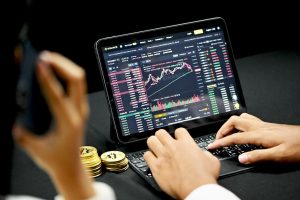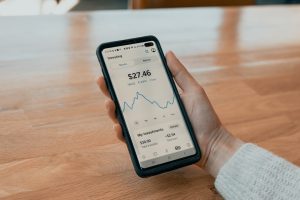Forex or foreign exchange market is one of the most lucrative and volatile financial markets in the world. Every day, trillions of dollars are exchanged between traders, investors, banks, and other financial institutions. The main goal of every investor or trader in forex is to make a profit. But how does profit work in forex? In this article, we will explore the mechanisms behind forex profit and how traders can maximize their earnings.
Forex Profit: Basic Concepts
At its core, forex profit is the difference between the buying price and the selling price of a currency pair. In other words, it is the amount of money a trader earns when they close a trade. The profit can be positive or negative, depending on whether the trader buys or sells a currency pair.
For instance, if a trader buys the EUR/USD pair at 1.1000 and sells it at 1.2000, they make a profit of 1000 pips (percentage in point) or $10 for every pip. Conversely, if the trader sells the same pair at 1.1000 and buys it back at 1.2000, they will incur a loss of 1000 pips or $10 per pip.
The pip value or the amount of money earned or lost per pip depends on the lot size of the trade. A lot represents a specific amount of currency units traded, and it can be standardized or customized. The standard lot size is 100,000 units, while the mini-lot size is 10,000 units, and the micro-lot size is 1000 units. The pip value also depends on the currency pair, the exchange rate, and the currency of the trading account.
Forex Profit: Factors and Strategies
Making a profit in forex is not a straightforward process. It requires a deep understanding of the market, the economic fundamentals, the technical analysis, and the risk management principles. Traders should consider several factors when trading forex, such as the following:
1. Market Volatility: Forex is a highly volatile market that can experience sudden and significant price movements. Traders should be aware of the market conditions and adjust their trading strategies accordingly.
2. Economic Indicators: Forex prices are influenced by macroeconomic indicators, such as interest rates, GDP, inflation, and employment. Traders should keep track of these indicators and their impact on the currency pairs they trade.
3. Technical Analysis: Forex traders use various technical tools and indicators to analyze the price charts and identify the trends, support and resistance levels, and entry and exit points. These tools can help traders make informed decisions and maximize their profits.
4. Risk Management: Forex trading involves a high level of risk, and traders should have a sound risk management strategy to minimize their losses and protect their capital. This strategy can include setting stop-loss and take-profit orders, diversifying their portfolio, and managing their leverage ratio.
Forex Profit: Leverage and Margin
One of the unique features of forex trading is the leverage ratio, which allows traders to control a large amount of currency with a small margin deposit. Leverage can amplify both profits and losses, and traders should use it wisely. For instance, a leverage ratio of 1:100 means that a trader can control $100,000 worth of currency with a margin deposit of $1000. If the trade earns a profit of $1000, the trader will make a 100% return on investment. However, if the trade incurs a loss of $1000, the trader will lose 100% of their margin deposit and may face a margin call.
Margin is the amount of money that traders need to deposit as collateral to open and maintain a trading position. The margin requirement varies depending on the leverage, the lot size, and the currency pair. Traders should always maintain sufficient margin to avoid a margin call, which occurs when the account balance falls below the required margin level. A margin call can trigger the automatic closure of the trading position and result in a significant loss.
Conclusion
Forex profit is a complex and dynamic concept that requires careful planning, analysis, and execution. Traders should consider various factors, such as market volatility, economic indicators, technical analysis, and risk management when trading forex. They should also use leverage and margin wisely and maintain sufficient margin to avoid a margin call. With a sound trading strategy and discipline, forex traders can make consistent profits in the world’s largest financial market.





